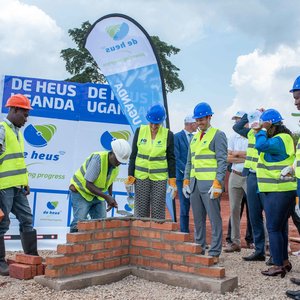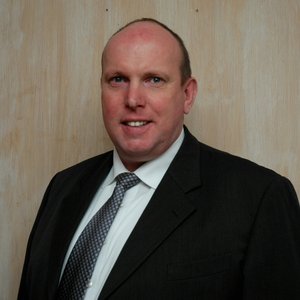Energy, sustainability, and circularity are dominating the EU agenda for maintaining food security and resilience of the EU agri-food chain. Can we still grow animal protein production in Europe and what are the boundaries to do so? Many agree that a reset is needed in the way we produce food and a paradigm shift towards circularity, as part of a larger bio-based economy and a sustainable EU production of animal proteins. The 30th edition of the annual congress of the European Feed Manufacturers' Federation (FEFAC), held in June - took a deep dive into the role of circular feed to meet the EU Green Deal and sustainable food systems targets while providing affordable foodstuffs of animal origin (livestock and fish) to citizens.
Circularity: What does it mean?
Circularity, in general, means optimizing a system, rather than optimizing only the farm or the animal. It entails better ways to integrate crops (feed) and livestock or fish and looking at all the side streams we can think of, and how and where we can re-use them. In other words: reduce resource consumption and emissions to the environment by closing the loop of materials and substances. Daniela Battaglia, livestock production officer at the FAO, said in her keynote that “the feed sector contributes to the circularity of food systems, through the recovery/valorization of nutrients from other processes in the agri-food chain which could otherwise be lost (byproducts, food waste, etc.). Using innovative technologies and advanced and alternative ingredients as direct and indirect sources of feed can further reduce the feed-food-fuel competition and the livestock/feed sectors’ contribution to GHG emissions as well as alleviate pressure on the world’s natural resources.”
Critical view on current bottlenecks
Former FEFAC president, Asbjørn Børsting, addressed that the upcycling of nutrients through farm animals and fish, converting secondary raw materials to highly bioavailable nutrients for human consumption, is an important part of our license to produce as European feed manufacturers. “We can provide many concrete examples, allowing us to increase the share in feed formulations of circular feed, not competing with direct human food use. However, we recommend a critical review of current bottlenecks in the EU regulatory framework that restrict circularity in EU food systems through animal nutrition and allow for further optimization of our circular economy potential in the forthcoming EU Sustainable Food Systems Framework.”
Circularity discussed at a dedicated aquafeed panel
For the first time in the history of the FEFAC conference, a dedicated aquafeed panel discussion was part of the event, highlighting the importance of aquaculture in circular and sustainable food production and the growth potential of this sector in Europe. Entitled The role of sustainable fish feed for the sustainable development of aquaculture, this panel was moderated by Ole Christensen, FEFAC fish feed committee chair and vice president EMEA at BioMar. Together with Brian Thomsen, EU Aquaculture Advisory Council chair, Danish Aquaculture Producer Organisation and Yngve Torgersen, director general, department of aquaculture, Norwegian ministry for trade, industry, and fisheries. The panel delved into the current efforts, regulatory challenges and the importance of expanding the portfolio of sustainable fish feed ingredients.
More fish feed ingredients available
Many circular economy practices are already used for animal protein production in the EU, and also in the aquaculture sector. Leftovers from fish processing, such as scraps, skins and trimmings, are circled back to farmed fish as high-quality marine feed ingredients. Producing fishmeal and fish oil for fish diets from the live catch is not circular and hence often perceived as being less sustainable. Christensen addressed: “The EU aquafeed sector has made some great steps into more sustainable practices over the years already. We are a relatively new industry compared to the matured livestock sectors in Europe. We have been challenged over the last few years to look for more diverse feed ingredients and apply precision farming to minimize nutrient losses (through feed waste and manure) in open-sea systems. Twenty years ago, we used around five different ingredients in our fish diets. Today, formulators often include 20-25 different raw materials in a product, including more kinds of new ingredients that have popped up in the last few years, such as insect meal and new raw materials based on for instance algae, as well as application of feed additives. Combined with the new technologies, we have available today and land-based recirculated aquaculture systems (RAS), we can better capture and re-use side streams also from the farming part. We can also still improve a lot on efficiency through optimization of FCR, survival rate and fish health. Reducing the carbon impact of aquaculture requires efforts on different levels.”
Look at the oceans for new ingredients
Thomsen highlighted the increasing demand for feed that is circular and climate neutral while keeping performance levels high at the farm level. “We still rely too much on marine ingredients from wild fish stocks. Limiting this dependency remains a key strategy for sustainable growth. Increased pressure on arable land and freshwater resources are key drivers of biodiversity loss and the use of land-based feed ingredients, often sourced outside the EU, challenges the principle of circularity. We must create a source of circular and carbon-neutral ingredients that meet the farmers’ request for high-performance feed. Only 2% of our food comes from the oceans and many EU policy papers highlight the potential of farmed seafood including algae as a source for feed with a low carbon footprint.” Thomsen also addressed that we must find new ways to treat and add value to sludge and use the waste streams. “The EU regulation does not allow to use this sludge to be used as a substrate for insect production. If this can be done, it would be a perfect example of circularity, as we can feed the insect protein back to the fish. Some EU rules are sometimes too land-based animals focused.”
Norwegian initiative on sustainable feed
One of the key examples of successful EU aquaculture is Norway, blessed by its coastline and good water conditions. Torgersen said at the panel discussion that we must reduce the environmental footprint of aquaculture. “Access to low emission feed is key to reach the sustainability goals. We must take the advantage of the new raw materials, but also keep on investing in the trust around aquaculture production in Europe by showing our commitment to invest on sustainable fish farming practices, including sustainable and safe fish feed ingredients. The Norwegian government has therefore launched an initiative aiming that all ingredients for aquafeed should come from sustainable sources by 2030. This means that we have produce more resources locally, as we cannot transport ingredients across the world anymore. I see potential in harvesting new ingredients from the ocean, such as zoo plankton and microalgae. But there is also an increase in the application of yeasts and beneficial bacteria and the insect derived ingredients,” Torgersen commented.
No common EU aquaculture policy
Could the Norwegian initiative be an example for others? Torgersen explained: “Norwegian aquaculture is very homogenous (99% salmon), while EU aquaculture is very heterogenous. When we look at the EU we have Finland in the North, Cyprus in the South, Hungary in the East and Ireland in the West. We are dealing with the production of different species, including salmon, trout, carps, seabass/seabream, oysters, blue mussels etc. This heterogenicity makes it challenging to establish a common EU aquaculture policy on the same level as a Common Agriculture Policy (CAP) or Common Fisheries Policy (CFP).” Thomsen added: “Having a common aquaculture policy could speed up efforts, new legislation, and accelerate growth in EU aquaculture. Maybe the new upcoming EU commission (2024) is open to explore this.”
The 30th FEFAC Congress took place on June 14-16, 2023 in Ystad (Sweden). The public conference on June 15 welcomed a large range of national, European, and international speakers and was attended by over 200 participants.













